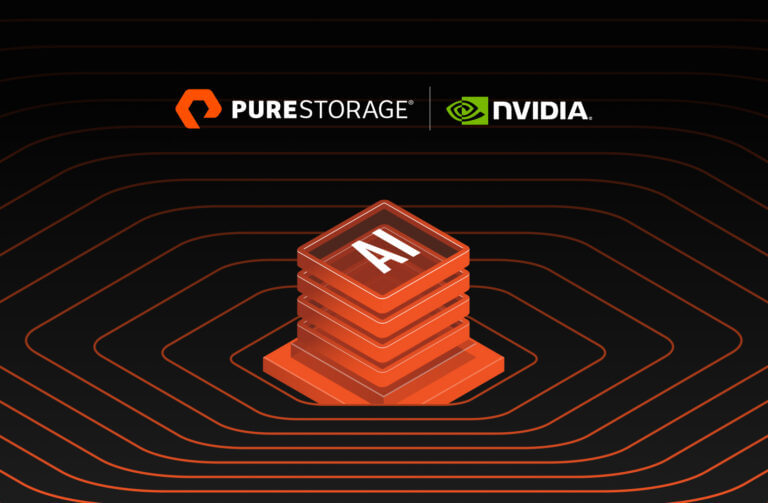This post is co-authored by Peter Eicher.
After 2020 and beyond, retail has rapidly shifted from brick-and-mortar retail to e-commerce. Consumers spent $347.26 billion online with US retailers during the first six months of 2020 according to research from Digital Commerce 360. And the trend will likely continue. More customers now expect retailers to offer multiple options for getting actual purchases. Customers want to choose whether to have items shipped or pick them up in-store or curbside. We’ve seen an increase in retailers using their online properties as their primary sales channel and their physical stores as fulfillment centers.
Key Trends Shaping Retail
Although 2020 definitely sparked change, multiple other trends are at work.
- Online competition is increasing as more businesses launch their first digital storefronts.
- Optimizing inventory with accurate data is more critical than ever, enabling retailers to better align supply with demand and do forecasting.
- Omnichannel shopping and fulfillment aims to deliver a seamless customer experience no matter the platform—computer, mobile device, or physical store.
One constant: Managing customer expectations is essential. Buyers expect transparent pricing with detailed and accurate product information. They want a frictionless experience while navigating the site and placing an order. And they value personalized experiences with customized product recommendations and easy checkout processes. To deliver, retailers collect all kinds of data such as purchase history, on-site interactions, and pricing.
A Solid IT Foundation for Digital Commerce
The right IT infrastructure is vital not only to support your online marketplace but also to deliver the experience customers expect. Aging infrastructure can’t keep up and will result only in frustration both for you and your customers. And risk to your business.
During the holiday shopping season, an apparel retailer’s ordering system crashed during the live launch of a limited-edition collaboration with a social influencer. Customers took to social media to express frustration, reporting online waits as long as two hours. Because of the outage, the retailer lost business and its brand took a hit.
Databases are the most integral component of a retailer’s infrastructure. Not only do they provide data structure but they store product information (descriptions, prices, SKUs, promotions, and availability), customer data, and transactional information. Historically, companies have leveraged relational database management systems like SQL Server and Oracle for order processing and transactions. But recent years have seen growth in adoption of open-source databases such as MySQL, PostgreSQL, and their NoSQL counterparts (MongoDB, Cassandra, Couchbase, and others). These systems provide scalability and the ability to work with large data sets without I/O processes becoming a bottleneck.
Crucial to the success of an e-commerce site, data services complement open-source databases. With ever-growing real-time data management and analysis needs, you can’t let storage be a bottleneck. Traditional systems like direct-attached storage (DAS) aren’t designed to meet the demands of modern workloads. Trying to work around storage limitations can lead to increased complexity, higher administrative costs, and downtime. And storage outages, both planned and unplanned, can impact revenue.
Retail IT departments are often stretched thin. Managing storage takes valuable time that you could better spend driving changes that have business benefits. Improving time to market and increasing software development efficiency can enhance your competitive position. Both are critical in retail. Customers are always looking for the latest, greatest shopping experiences. Software development teams need the power to produce new applications and features in a fraction of the time.
Agile Infrastructure for Agile Digital Commerce
Pure Storage® delivers the speed, simplicity, resiliency, and hybrid-cloud agility retailers need. Use Pure Storage FlashArray™ to simplify your storage environment. The hardware, software, and cloud-management experience is co-designed to make everything just work. With plug-and-play storage-class memory, FlashArray all-NVMe architecture delivers new levels of performance with microsecond latency. Extremely low latency is critical to optimizing output from mission-critical applications and databases. FlashArray delivers proven 99.999% availability, including expansions and controller upgrades. Plus, it easily handles unexpected spikes—a common occurrence in retail—to keep transactions flowing.
Tested and Proven Performance
We ran tests with MySQL to compare the performance of DAS to FlashArray. The FlashArray device handled greater than 50% more transactions per second than the DAS system, with up to 34% lower latency. And you can protect your data with Purity ActiveDR™. Purity ActiveDR goes beyond volume replication to also copy snapshot histories and schedules, volume settings, protection groups, and user-defined volume tags to the target array.
When we tested ActiveDR against MongoDB replication, the FlashArray system demonstrated up to 33% lower replication lag during heavy write operations than MongoDB with native replication. To build a MongoDB replica set in Amazon Web Services (AWS), it’s as easy as locking the file system on the MongoDB node, copying the Pure Cloud Block Store™ volume, and connecting the new volume to the replica set node. Recovery is quick and easy without performance impact, database stoppage, or lengthy data copy over the network.
When it comes to optimizing capacity allocation for future growth, the Pure1 Meta® AI-driven workload planner helps you avoid the nightmare scenario of storage over- or under-provisioning. Evergreen//One offers storage as a service (STaaS) for on-premises and public cloud that unifies hybrid clouds with a single subscription. The best part? Pure’s Professional Services team can help you assess what technology you need and roll it out as quickly and seamlessly as possible.
The pandemic has shaken up the retail landscape, instigating massive acceleration to e-commerce. But with a modern and agile infrastructure, you can deliver the frictionless shopping experience your customers want and keep them coming back for more.
Learn more about Pure for open-source databases.
![]()






